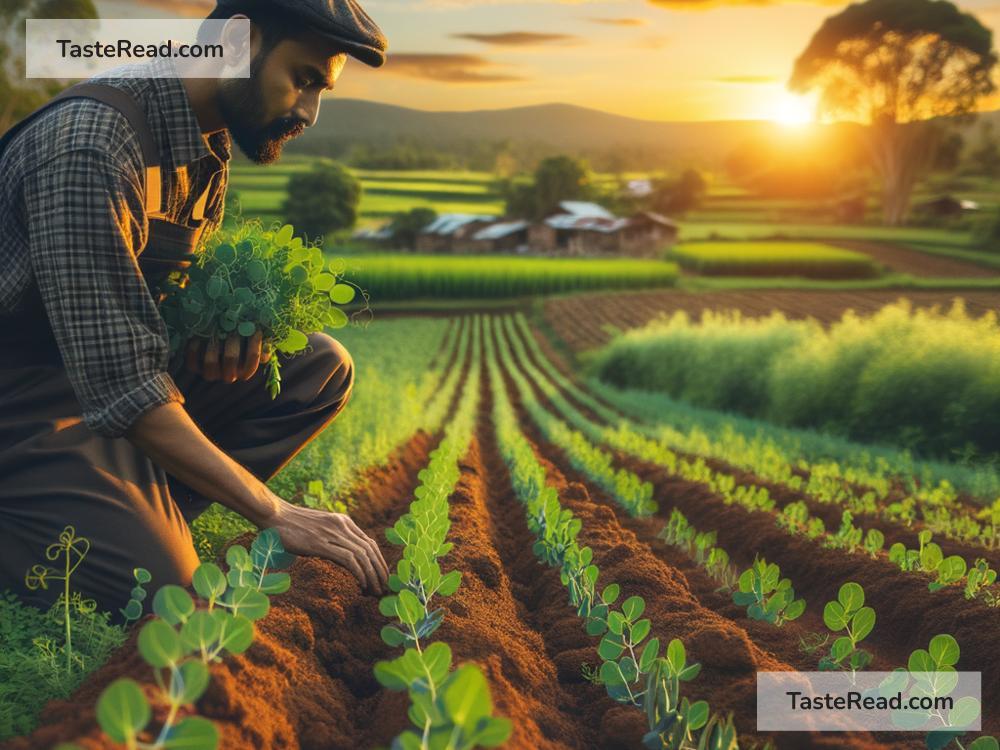The Surprising Link Between Peas and Sustainable Farming
When you think about peas, you probably picture tiny green vegetables in a bowl or added to dinner recipes. They’re common in many diets around the world and easy to grow. But did you know that peas are also heroes in the world of sustainable farming? These little plants are doing more to help the planet than you might expect.
In this blog, we’ll uncover the surprising link between peas and sustainable farming, explaining how they benefit both farmers and the environment.
What Is Sustainable Farming?
First, let’s talk about sustainable farming. In simple terms, it means farming in a way that protects the earth and supports future generations. Instead of damaging the soil, polluting water, or relying too much on harmful chemicals, sustainable farming uses methods that work with nature instead of against it.
Sustainable farming tries to do three things:
1. Protect the environment – This includes healthier soil, cleaner water, and less pollution.
2. Support communities – Farmers and their families can keep their farms running for years to come.
3. Provide food for everyone – Sustainable farming aims to grow crops without harming the planet.
Peas have an amazing role in helping farmers achieve all three goals. Here’s how.
The Magic of Nitrogen Fixation
One of the most incredible things about peas is their relationship with the soil. Peas belong to the legume family, which includes beans, lentils, and chickpeas. These plants have a special superpower: they can take nitrogen from the air and “fix” it into the soil. But what does that mean?
Nitrogen is like food for plants. They need it to grow big and strong. Farmers usually add nitrogen to their fields using synthetic fertilizers, which are made in factories. While fertilizers help crops grow, they can also cause problems. They pollute rivers, lakes, and oceans, where they harm fish and plants. Making these fertilizers also uses a lot of energy, adding to climate change.
Peas are different. Their roots form partnerships with helpful bacteria in the soil. These bacteria take nitrogen from the air and turn it into a form that other plants can use. This process is called nitrogen fixation. By growing peas, farmers can reduce or even skip using synthetic fertilizers. Less pollution and fewer chemicals mean healthier earth and water.
Healthier Soil = Healthier Planet
Soil is one of our planet’s most valuable resources. It’s where food grows and supports almost every living thing. But unhealthy soil can cause huge problems. Farming methods that overuse chemicals or plant the same crops year after year can damage the soil, making it less productive.
Peas help prevent soil damage and even improve its condition. When peas grow, their roots leave nitrogen in the soil, feeding future crops. Adding peas to a farm’s crop rotation (the practice of planting different crops in the same field over time) enriches the soil. Peas also reduce erosion, which happens when wind and water carry away valuable soil. Their roots hold the soil together, keeping it strong and healthy.
Farmers know that healthy soil leads to better harvests. By planting peas, they can grow more food while protecting the land for years to come.
Peas and Climate Change
Climate change is one of the biggest challenges facing the planet. Farming plays a role because it contributes to greenhouse gas emissions. For example, producing synthetic fertilizers releases carbon dioxide and nitrous oxide into the atmosphere, warming the planet.
Peas are part of the solution. As mentioned earlier, they reduce the need for fertilizers, which means fewer emissions. But that’s not all. Peas themselves have a low environmental footprint. Compared to other crops, they require less water and energy to grow. By choosing crops like peas, farmers can reduce their impact on the climate.
A Win for Farmers and Communities
Peas aren’t just good for the environment—they’re also good for people. Because they improve soil health naturally, farmers save money on expensive fertilizers. They can spend less and still grow healthy crops. Peas are also versatile, growing in many different climates, which makes them accessible to farmers worldwide.
In many regions, planting peas also helps fight food insecurity. Peas grow quickly and are packed with nutrients, including protein, fiber, and vitamins. Communities can rely on peas for affordable, healthy food.
Peas Are Tiny but Mighty!
Farmers, scientists, and environmentalists are always looking for ways to make farming more sustainable. The humble pea turns out to be a valuable ally in this mission. With their ability to fix nitrogen, improve soil, and reduce farming’s impact on the climate, peas are much more than just a tasty vegetable.
The next time you see peas on your plate, remember how important they are—not just for feeding people but for helping the planet. As farms around the world adopt more sustainable practices, peas will play a key role in protecting the earth and ensuring we can grow food for generations to come.
Who knew such a small plant could have such a big impact? Peas truly deserve a spot in the spotlight.


